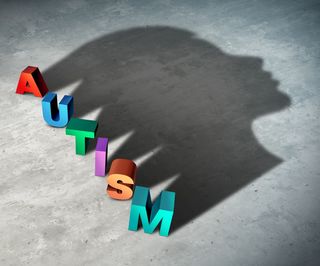MTT is a prolonged version of a process already used to treat infection by a bug called Clostridium difficile, which causes life-threatening diarrhoea.
已經(jīng)有一種被用于治療艱難梭菌感染(會引起致命的腹瀉)的方法,而MTT是這種方法的延伸版。
It involves transplanting carefully prepared doses of faecal bacteria from a healthy individual to a patient.
這種方法包括將精心準備的糞便細菌從健康個體移植到病人體內(nèi)。
The researchers gave the children, first, an oral antibiotic, a bowel cleanse and an oral antacid
研究人員首先給孩子們口服抗生素、腸道清潔和口服抗酸劑
(to ensure that microbes administered by mouth would survive their passage through the stomach).
(確保口服微生物能在通過胃的過程中能夠存活)。
They followed this up with either an oral or a rectal dose of gut bacteria, and then, for seven to eight weeks, a daily antacid-assisted oral dose.
他們對用口服或直腸劑量的腸道細菌進行追蹤,然后連續(xù)七到八周,每日服用抗酸劑輔助口服劑。
Ten weeks after treatment started the children's Prevotella levels had multiplied 712-fold.
治療開始10周后,孩子們的普氏菌增加了712倍。
In addition, those of another species, Bifidobacterium, had quadrupled.
此外,另一種雙歧桿菌增加了四倍。
Bifidobacterium is what is known as a "probiotic" organism—something that acts as a keystone species in the alimentary ecosystem,
雙歧桿菌被稱為益生菌生物—它們在食物生態(tài)系統(tǒng)中起關(guān)鍵作用,
keeping the mixture of gut bacteria healthy. Now, two years later, although levels of Prevotella have fallen back somewhat,
保持腸道細菌混合物的健康。如今,兩年后,雖然普氏菌含量有所回落,
they are still 84 times higher than they were before the experiment started.
但仍比接受試驗前高84倍。

Levels of Bifidobacterium, meanwhile, have gone up still further—being five times higher than they had been at the beginning of the study.
同時雙歧桿菌的含量仍進一步提升—比研究之初高五倍。
This, says Dr Krajmalnik-Brown, suggests the children's guts have become healthy environments that can recruit beneficial microbes by themselves.
Krajmalnik-Brown表示這意味著孩子們的腸道環(huán)境變得健康,可以自己補充有益微生物。
Crucially, these changes in gut bacteria have translated into behavioural changes.
關(guān)鍵是這些腸道細菌的改變轉(zhuǎn)化成了行為的變化。
Even 18 weeks after treatment started the children had begun showing reduced symptoms of autism.
自治療開始18周后,孩子們孤獨癥癥狀開始減弱。
After two years, only three of them still rated as severe, while eight fell below the diagnostic cut-off point for ASD altogether.
兩年后,其中僅有三人仍被評定為重度自閉癥,8人完全低于ASD的診斷建議值。
These eight thus now count as neurotypical.
因此這8例被定為典型發(fā)育。
Exactly how gut bacteria might contribute to autism is a puzzle.
腸道細菌究竟是如何導致自閉癥的仍是個謎。
But light has been shed on the matter by the second study,
但第二項研究為這個問題提供了線索,
published this week in Cell by a team led by Sarkis Mazmanian of the California Institute of Technology.
本周加州理工學院Sarkis Mazmanian領(lǐng)導的團隊在《細胞》雜志發(fā)表了一項研究。
Dr Mazmanian and a group of colleagues that also included Dr Krajmalnik-Brown performed a type of MTT on mice.
Mazmanian博士及其同事(其中也包括Krajmalnik-Brown博士)對老鼠進行了一種MTT。
They collected bacteria from the faeces of both neurotypical and autistic people
他們收集了典型發(fā)育和孤獨癥人群糞便中的細菌
(who ranged in their symptoms from mild to severe) and transplanted these into hundreds of mice.
(他們的癥狀按輕微到重度排列)并將這些細菌移植到數(shù)百只老鼠體內(nèi)。
They then interbred the recipient mice and studied the offspring of these crosses—
然后他們讓受鼠雜交并研究它們的后代—
animals that had picked up the transplanted bacteria from their mothers at birth.
這些動物自出生后便從母親體內(nèi)遺傳了移植細菌。
Dr Krajmalnik-Brown and Dr Adams are now recruiting volunteers for a large-scale trial of MTT for adults with autism, to see if they, too, can benefit.
目前Krajmalnik-Brown博士和Adams博士正在為MTT大范圍成人孤獨癥試驗招募志愿者,他們想知道這種方法是否也有益于成人。
The paradigm, it seems, really is shifting.
范式似乎真的正在轉(zhuǎn)變。
譯文由可可原創(chuàng),僅供學習交流使用,未經(jīng)許可請勿轉(zhuǎn)載。












